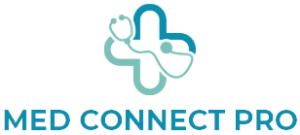In recent years, interest in anti-aging and longevity has soared, leading to the rise of various supplements aimed at cellular health. Among them, NMN (Nicotinamide Mononucleotide) has gained significant attention for its potential to boost NAD+ levels in the body. As people look for more effective ways to maintain energy, improve cognitive function, and slow down aging, the trend of using high-potency doses has emerged. Today, 1000mg NMN is common (read on Framer) is common in both consumer use and product formulations, marking a shift in how this compound is being approached for health benefits.
The reason 1000mg NMN is common stems largely from growing scientific evidence and anecdotal support for higher dosages. Early research in animals showed promising results even at lower doses, but as studies began involving humans, a clearer picture emerged. Experts and enthusiasts began to note that doses around 250–500mg might not provide the same noticeable benefits. Over time, many individuals experimenting with NMN supplementation began reporting better outcomes with 1000mg, thus normalizing this amount as a new standard.
Another factor influencing why 1000mg NMN is common is the evolution of supplement formulations. Initially, NMN products were limited in availability and often expensive. However, as manufacturing processes improved and demand increased, more affordable high-dose options became accessible. Now, major supplement brands and even smaller startups routinely offer NMN capsules and powders with 1000mg per serving, making it easy for consumers to adopt this dosage as a daily norm.
Additionally, 1000mg NMN is common due to the way the body utilizes NMN. NMN is a precursor to NAD+, a critical molecule involved in energy metabolism and DNA repair. Research suggests that the body’s NAD+ levels naturally decline with age, and restoring these levels may require a substantial input of NMN. While exact requirements vary from person to person, higher doses appear more effective in producing tangible results, especially in older adults. This biological rationale reinforces the perception that 1000mg is not only safe but also potentially optimal.
It’s also worth noting that 1000mg NMN is common among health-conscious individuals and biohackers who often follow the latest scientific developments. Influencers in the longevity community frequently share their NMN regimens online, and many of them highlight 1000mg as their preferred daily intake. This social proof further contributes to the normalization of this dosage, encouraging newcomers to begin their NMN journey at the same level.
From a safety standpoint, 1000mg NMN is common because it appears to be well-tolerated by most users. Although long-term human studies are still underway, short-term trials have shown few side effects at doses of 1000mg or even higher. This level of safety reassurance gives both consumers and healthcare providers more confidence in recommending NMN at higher doses. Consequently, the supplement market continues to move in the direction of making 1000mg products more widely available.
The packaging and marketing of supplements also support the trend that 1000mg NMN is common. Many manufacturers explicitly label their products as “high potency” or “clinical strength” at the 1000mg mark. These terms appeal to consumers seeking effective results, and in turn, reinforce the idea that this dosage represents a modern baseline rather than an upper limit. It’s not uncommon to see even higher doses being explored, but 1000mg remains the sweet spot for balance between efficacy and affordability.
Furthermore, 1000mg NMN is common because it aligns with the personalized health movement. People are increasingly tailoring their wellness routines to their unique needs, often after conducting genetic tests or metabolic assessments. As part of this individualized approach, higher NMN doses are chosen based on lifestyle factors, stress levels, and aging concerns. The flexibility to experiment and adjust dosing has made 1000mg a reliable and accessible choice for many.
Even in academic and clinical settings, 1000mg NMN is common as a benchmark dosage. Researchers conducting human trials often use 1000mg as a starting point to evaluate its effects on biomarkers of aging, mitochondrial function, and insulin sensitivity. This consistency across studies provides a valuable reference for both consumers and practitioners trying to interpret results or design their own supplementation strategies.
Ultimately, 1000mg NMN is common because it sits at the intersection of science, accessibility, and consumer demand. It represents a dosage that offers measurable benefits without straying into unknown territory. Whether you’re new to NMN or a seasoned user, understanding why this dose is so popular can help you make informed decisions about your health and longevity goals.
